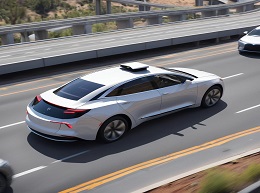AI in Transportation: Autonomous Vehicles and Beyond

Artificial Intelligence (AI) is reshaping the landscape of transportation, revolutionizing how people and goods move from one place to another. From autonomous vehicles to smart traffic management systems, AI technologies are driving innovation, efficiency, and safety in the transportation industry. In this article, we delve into the transformative impact of AI in transportation, exploring its applications, benefits, and future possibilities.
Autonomous Vehicles: Redefining Mobility
Evolution of Autonomous Driving
Autonomous vehicles (AVs) leverage AI algorithms, sensors, and advanced computing systems to navigate and operate without human intervention. From basic driver assistance features to fully autonomous driving capabilities, AVs are poised to revolutionize transportation by enhancing safety, efficiency, and accessibility.
Example: Tesla Autopilot
Tesla's Autopilot system uses AI-powered computer vision, radar, and ultrasonic sensors to enable semi-autonomous driving capabilities in its vehicles. While drivers remain responsible for vehicle operation, Autopilot assists with tasks such as lane-keeping, adaptive cruise control, and automated parking, enhancing driving safety and convenience.
Smart Traffic Management Systems
AI for Traffic Optimization
AI-powered traffic management systems analyze real-time traffic data, including vehicle flows, congestion patterns, and traffic incidents, to optimize traffic flow and reduce congestion. These systems leverage predictive analytics and adaptive control algorithms to dynamically adjust traffic signals and routes, improving overall traffic efficiency.
Example: IBM Intelligent Operations Center for Smarter Cities
IBM's Intelligent Operations Center uses AI and IoT technologies to analyze data from various sources, such as traffic cameras, sensors, and social media feeds, to monitor and manage traffic in cities. By predicting traffic congestion and identifying optimal routes in real-time, the system helps cities optimize traffic flow and minimize delays.
Enhancing Public Transportation
AI for Public Transit Optimization
AI algorithms optimize public transportation systems by analyzing ridership data, scheduling, and route information to improve service reliability and efficiency. Predictive analytics and demand forecasting models enable transit agencies to optimize routes, schedules, and capacity allocation, enhancing the overall passenger experience.
Example: London's Predictive Bus Arrival System
Transport for London (TfL) uses AI-driven predictive analytics to estimate bus arrival times based on historical data, real-time traffic conditions, and passenger demand. The system provides accurate and reliable bus arrival predictions to passengers via mobile apps and digital displays, improving transit accessibility and convenience.
Freight and Logistics Optimization
AI for Freight Management
AI technologies optimize freight and logistics operations by analyzing supply chain data, route optimization, and inventory management to improve efficiency and reduce costs. Predictive analytics and machine learning algorithms enable logistics companies to optimize delivery routes, minimize transit times, and reduce fuel consumption.
Example: UPS On-Road Integrated Optimization and Navigation (ORION)
UPS's ORION system uses AI algorithms to optimize delivery routes for its drivers, considering factors such as package volume, traffic conditions, and delivery priorities. By dynamically adjusting routes in real-time, ORION reduces fuel consumption, improves delivery efficiency, and enhances overall operational performance.
Challenges and Considerations
Ethical and Regulatory Considerations
The adoption of AI in transportation raises ethical considerations, including safety, privacy, and liability issues. Regulatory frameworks and standards need to be established to ensure the safe and responsible deployment of AI technologies in transportation.
Integration and Interoperability
Integration of AI systems with existing transportation infrastructure and vehicles requires interoperability standards and protocols to enable seamless communication and coordination between different components and stakeholders.
Conclusion: Shaping the Future of Mobility with AI
Artificial Intelligence is transforming transportation, from autonomous vehicles to smart traffic management systems, revolutionizing how people and goods move in cities and beyond. By harnessing the power of AI technologies, transportation systems become safer, more efficient, and more sustainable, paving the way for a future of mobility that is intelligent, interconnected, and inclusive.
In conclusion, AI is driving a paradigm shift in transportation, redefining mobility and shaping the future of transportation systems worldwide. As AI technologies continue to advance, the possibilities for innovation and improvement in transportation are limitless, offering safer, more efficient, and more accessible mobility solutions for all.